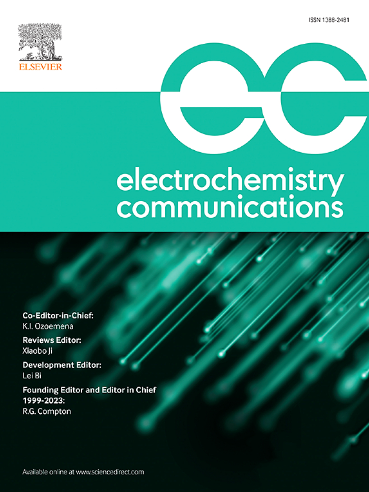Enhancing the cycle stability of milled Mg-Ni alloys: The role of Pd substitution on reversible electrochemical hydrogenation/dehydrogenation reactions
IF 4.7
3区 工程技术
Q2 ELECTROCHEMISTRY
引用次数: 0
Abstract
The practical application of Mg-based alloys as anode materials for nickel-metal hydride (Ni-MH) batteries is hindered by serious capacity decay. To enhance their cycle stability and elucidate the underlying mechanism, this study investigates the influence of partially substituting Ni with Pd on the structural and electrochemical properties of milled Mg55Ni45 alloy, as well as their microstructural evolution during cycling. This work demonstrates the Pd addition enables reversible electrochemical hydrogenation/dehydrogenation reactions in the Mg2Ni phase and enhances the electrochemical reaction kinetics of the alloys. As a result, the addition of Pd improves both cyclic performance and rate capability of the milled alloy electrodes. The Mg55Ni45 alloy delivers a maximum discharge capacity of 488.65 mAh/g but decays to 110 mAh/g after only 13 cycles at a discharge current density of 50 mA/g. In contrast, the Mg55Pd4Ni41 alloy demonstrates a discharge capacity of 564.6 mAh/g and retains 277 mAh/g after 50 cycles. Notably, when subjected to a higher discharge current density of 300 mA/g, the Mg55Pd4Ni41 alloy displays an enhanced discharge capacity (401.49 mAh/g) compared to that of the Mg55Ni45 alloy (77.72 mAh/g).
求助全文
约1分钟内获得全文
求助全文
来源期刊

Electrochemistry Communications
工程技术-电化学
CiteScore
8.50
自引率
3.70%
发文量
160
审稿时长
1.2 months
期刊介绍:
Electrochemistry Communications is an open access journal providing fast dissemination of short communications, full communications and mini reviews covering the whole field of electrochemistry which merit urgent publication. Short communications are limited to a maximum of 20,000 characters (including spaces) while full communications and mini reviews are limited to 25,000 characters (including spaces). Supplementary information is permitted for full communications and mini reviews but not for short communications. We aim to be the fastest journal in electrochemistry for these types of papers.
 求助内容:
求助内容: 应助结果提醒方式:
应助结果提醒方式:


